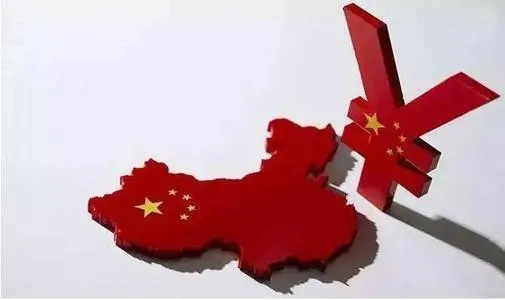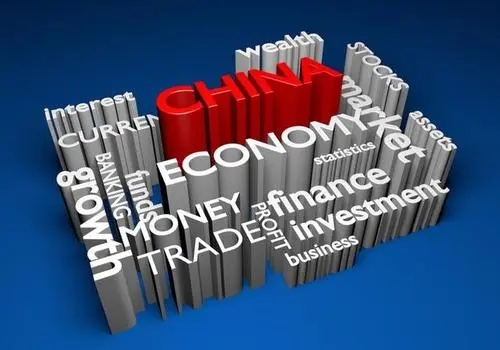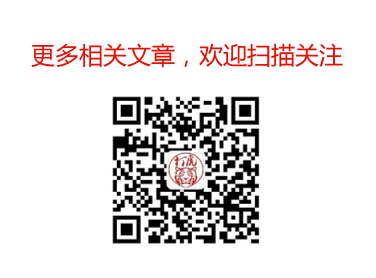V-shaped Economic Rebound
发布时间:2021-09-29 14:21:58 来源于:CBF
摘要:
.jpg)
Since the beginning of this year, global commodity prices have risen significantly, with the Nanhua industry index increasing by about 7 percent as of April 16.
The prices of copper, rebar, iron ore, and crude oil have all surged by more than 10 percent, and the CRB Spot Market Price Index has soared by nearly 15 percent.
Some people worry that if rising commodity prices bring about a new round of inflation, or if the authorities have such a concern, early tightening of macroeconomic policies may ensue.
With the absence of significant expansion of demand, there is no need to worry that the Producer Price Index, or PPI, rise will trigger a new round of inflation.
Instead, attention should be focused on the effect of redistribution of corporate profits brought about by the rise of the PPI; and an effective way to improve the cash flow of downstream industries should "make the cake bigger" and solve the problem of insufficient aggregate demand.
Even if inflation rises in the future, as long as such a rise remains moderate, the benefits to the economy will outweigh the negative impacts.
The logic of this round of commodity price increase is quite similar to that in 2016, when demand-side structural features can provide better explanation.
Hit by the COVID-19 pandemic, the overall performance of the Chinese economy was similar to that in 2009, having a V-shaped rebound after a rapid bottoming out, and so it was with commodity prices.
However, it is not right to simply draw an analogy between the ongoing economic recovery and the rise of commodity prices to that in 2009, and then predict a new round of inflation will occur.
In 2009, driven by the significant expansion of aggregate demand, goods prices soared and caused inflationary pressure, as reflected in the simultaneous bottoming and peaking of the consumer price index or CPI and the PPI, and their similar growth rates.
Before 2016, the PPI and the CPI often moved in the same direction in each economic cycle, and the PPI did not have a stable and obvious leading role over the CPI.
In the current economic recovery, the CPI and the PPI have diverged significantly. The PPI is on a quick rise, while the CPI and the core CPI are falling rapidly.
The GDP deflator, which can more comprehensively reflect price changes, has not shown any significant increase. That is to say, even if the Chinese economic rebound lasts four quarters, the actual inflationary pressure will not be heavy.

In short, we don't have enough evidence to show that the PPI was a leading indicating index over the CPI for the past five years, which means the price transmission mechanism from the production end to the consumption end is not smooth.
Our calculations showed the rolling correlations of the CPI and the PPI in different periods had a great structural change in the year 2016.
Before 2016 and except for the period during the 2008 Global Financial Crisis, the rolling correlation between the PPI and the CPI was relatively stable-the three-and five-year rolling correlation coefficients were both around 0.8.
However, after 2016, the three-year rolling correlation coefficient slumped rapidly, followed by the rapid decrease of the five-year rolling correlation coefficient in 2017.
Moreover, different types of commodities have shown different price performances during this round of so-called commodity price surge.
Since Jan 2, 2020, black-color commodity price index by Nanhua Futures has surged by 71 percent, followed by nonferrous metals (27 percent), and agricultural products (10 percent), while energy products' price index has declined 5 percent.
Such differences in price performance can be well explained from supply and demand nonequilibrium.
From the supply side, output of black commodity and nonferrous metals has declined due to production disruptions caused by the pandemic, while the impact on supply of agricultural and energy products is not that strong.
Meanwhile, demand for crude oil has shrunk, causing a slide in oil price. Before the official removal of quarantine policies by different countries, it is difficult to see a significant improvement in crude oil demand, and the decline of price of crude oil, which is the most upstream product in the energy and chemical industry, has created a huge decline space for the prices of energy and chemical products.
Demand for the black commodities and nonferrous metals, however, is stronger, because it is obvious that investment is stronger than consumption during this round of economic recovery, and the real estate industry has the most eye-catching investment performance, which is similar to that in 2019.
Exports, another important contributor to the Chinese economic recovery, have also limited impact on agricultural products demand.
Such differences can explain to some extent why changes in the PPI have not conducted to the CPI, as the prices of agricultural products and crude oil have stronger correlation with the CPI than black commodity and nonferrous metals.
More attention should be paid to the redistribution of corporate profits alongside the industrial chain, while tax and fee reductions have limited effect to deal with surging raw material prices.
In the past five years, the PPI and the CPI had a lasting divergence, and there was no evidence to show the PPI has influenced the CPI.
The commodity price surge will mainly cause redistribution of profits alongside the industrial chain, and the upstream industry has an increasing share of the total profits.
Also, with the absence of demand expansion, there is no need to worry about the risk of the PPI triggering a new round of inflation, and more attention should be paid to the effect of redistribution of corporate profits brought about by the PPI rise.
Since supply cannot be controlled and demand cannot be suppressed, some will think of reducing taxes and fees to deal with the surging commodity price. This approach may reduce the cost pressure of downstream enterprises to some extent, but is not as effective as some people may think.
On the one hand, value-added tax reductions cannot improve cash flow of downstream enterprises directly, because benefits from reductions of value-added tax, a turnover tax, will be distributed among upstream and downstream enterprises, in accordance with a corporate's bargaining power, and downstream enterprises have weaker bargaining power than the upstream ones.
Reducing corporate income tax rate is also in conflict with China's fiscal and taxation reform paradigm that focuses on gradually increasing the proportion of direct taxation, although it can directly improve enterprise incomes.
On the other hand, reductions in tax and fees cause decline in government revenue, which may further aggravate the grassroots governments' pressure to equate revenues with expenditure, and even indirectly strengthen their dependence on "land finance"-a fiscal strategy in which local governments generate revenue through land grant premiums and land tax revenues.
Based on the analysis above, it can be concluded that to improve cash flow of downstream industries, the real effective way is dealing with the problem of insufficient aggregate demand and "making the cake bigger".
China's economy is still recovering, and enterprises need time to improve their balance sheets, while the government has fiscal pressure.
A mild inflation will help improve the balance sheets of enterprises, residents, and the government, as well as increase aggregate demand. As long as inflation stays within the central bank's target range for inflation and does not evolve into hyperinflation, the benefits will outweigh the negative effects.
If support policy for the economic recovery is withdrawn prematurely, the economy will fall into deflation due to insufficient aggregate demand, accompanied by a new round of economic slide.
Profits at China's major industrial firms grew at a steady pace in the first four months of the year as the country's economic recovery gained further momentum, official data showed on Thursday.
China's industrial firms with annual business revenue of at least 20 million yuan ($3.12 million) saw their combined profits rise 106 percent on a yearly basis during the January to April period to 2.59 trillion yuan, according to the National Bureau of Statistics.
The figures represented an annual growth of 49.6 percent when compared with 2019, with average growth rate in the past two years coming in at 22.3 percent. On a monthly basis, industrial profits rose by 57 percent in April to 768.63 billion yuan.

Industrial profits for the manufacturing sector grew by 114 percent on a yearly basis to 2.2 trillion yuan. Overall, industrial profits rose steadily due to the improved demand and lower costs, the NBS said.
According to Zhu Hong, a senior statistician at the NBS, profit growth remained steady in most of the sectors on a yearly basis, thereby sustaining the upward growth momentum that began since the second half of last year.
Profits in the mining sector reached 217.1 billion yuan, up 103 percent on a yearly basis. Higher prices for bulk commodities and improved demand fueled the profit surge in the mining sector, said Zhu.
Equipment manufacturing and high-tech manufacturing also saw improved momentum, while consumer goods manufacturing continued its steady recovery, the NBS said.
Zhu said that overall, the performance of industrial enterprises remained stable and showed quick recovery during the four-month period. This is noteworthy, considering that the global COVID-19 situation is still complex, the foundation for industrial economic recovery is not yet solid and the profit growth has been uneven. Some of the consumer industries are yet to return to the pre-pandemic profit growth levels.
Zhu said that the higher bulk commodity prices increased pressure on the production and operation of midstream and downstream industries. It is important to ensure steady bulk commodity supplies and keep the prices stable to consolidate the growth recovery.
Zhu Jing, a senior analyst at the research department of Bank of China, said profits of industrial firms will grow at a much faster pace on the back of steady domestic demand, resilient external demand and the country's existing pro-employment policies. However, operating costs may increase for most of these enterprises and measures need to be rolled out to monitor the market changes and increase supply and demand of certain products.
China's inflation is likely to pick up in the coming months amid rising global commodity prices and recovering domestic demand, but there is no cause for concern, experts said.
The higher commodity prices are unlikely to spark a sharp surge in consumer prices, given the central bank's prudent policy stance and the moderate recovery in domestic demand, they said.
China's consumer price index, a key gauge of inflation, fell by 0.2 percent on a yearly basis last month compared with the 0.3 percent decline in January, amid growing demand for cultural and entertainment services during the Spring Festival holiday and rising global oil prices, the National Bureau of Statistics said on Wednesday.
Meanwhile, the producer price index, which measures factory-gate prices, rose to a 27-month high of 1.7 percent on a yearly basis in February, up from 0.3 percent a month earlier, the NBS said.
The stronger-than-expected inflation readings came after a sustained rally in global commodity prices like oil and copper triggered expectations of global reflation. This could mean rising inflationary pressure for China, a major importer of energy and commodities.
"China is likely to face higher inflation pressure due to rising global commodity prices, with the CPI and PPI growth set to increase this year," said Zhang Liqing, director of the Beijing-based Central University of Finance and Economics' Center for International Finance Studies and chief economist of PwC China.
But the risk of imported inflation should be controllable, Zhang said, given the prudent stance of the People's Bank of China, the central bank, and the room for it to adjust policies according to the changes in global commodity prices.
Also, some producers may choose to bear the rising commodity costs themselves and refrain from raising prices of their products, alleviating the inflationary pressure felt by consumers, Zhang said.
"The government's projected goal of an around 3 percent annual growth in the CPI will probably be fulfilled," he said, adding that it is still important to monitor global commodity prices and related risks.
"The recovery in domestic demand is not expected to be so strong that high consumer inflation will happen," said Wu Chaoming, chief economist with Chasing Securities.
Consumer spending will further recover as COVID-19 gets further controlled, but the process should be gradual and moderate, as evidenced by the still low core CPI reading last month, Wu said.
The NBS reported that the growth in the core CPI, which excludes food and energy prices to better reflect the real demand, has remained low at zero last month, though up from a 0.3 percent decline in January.
Falling food prices may also help rule out a sharp rise in CPI growth as pork production continues to recover, experts said. Food prices dropped by 0.2 percent on a yearly basis last month, versus a 1.6 percent rise in January, with pork prices down by 14.9 percent, the NBS said.
Lu Ting, Nomura's chief China economist, said the year-on-year PPI growth is expected to peak around the middle of the year and moderate thereafter with a whole-year growth of 4.2 percent, while the CPI growth may rise throughout the year and see an annual growth of 1.7 percent.
Though there have been concerns that the rising inflation may pressure the country's central bank to tighten policies, Lu said he expects the PBOC to stick to the "no sharp shift" commitment and roll out neither hikes nor cuts to policy interest rates and the reserve requirement ratio this year.
(责任编辑:Henry)
近期热门资讯:
